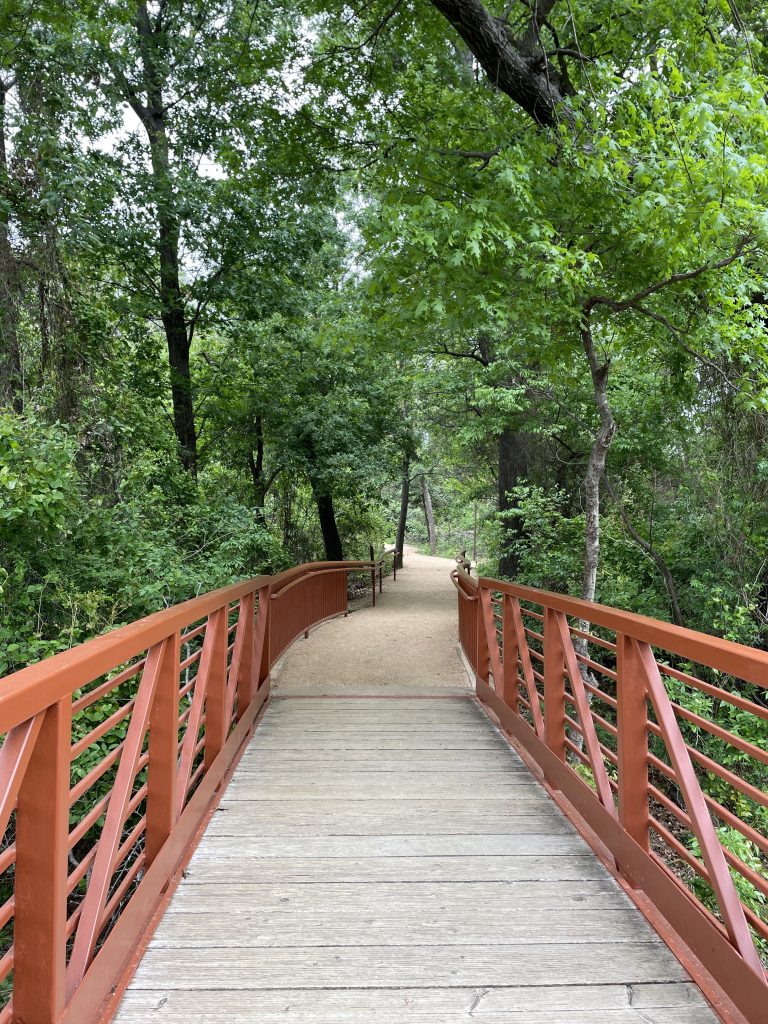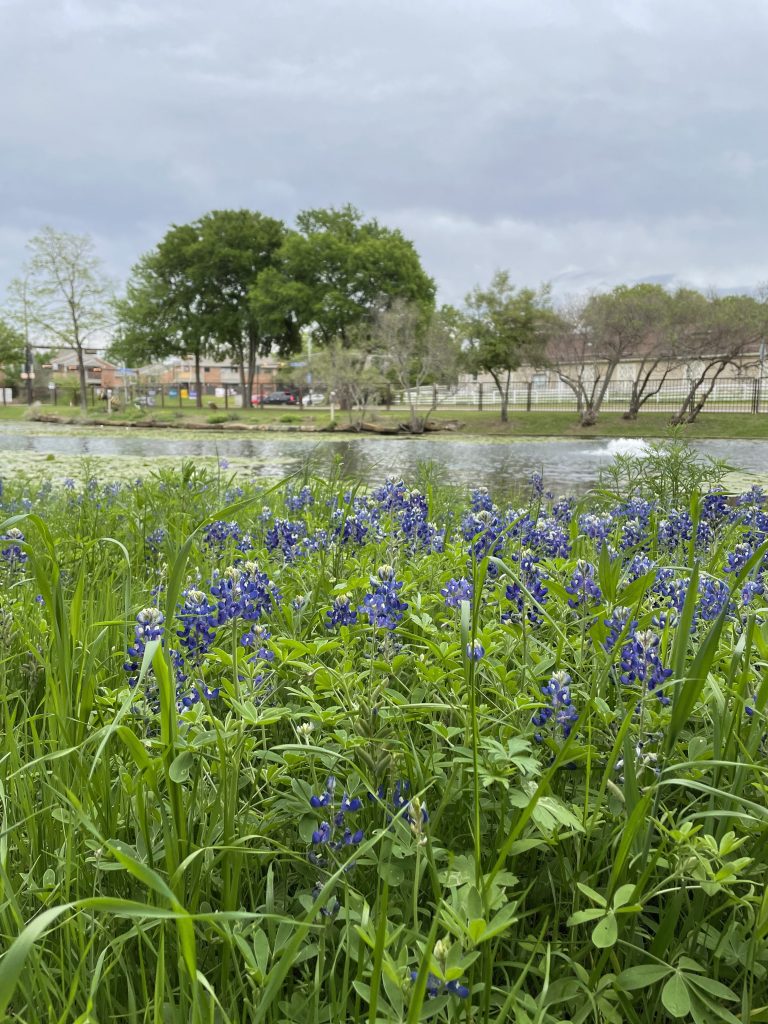Written by: Dr. Ellen Edwards-Ravkind, Naturalist Manager
Spring has arrived in North Texas! The days are getting longer and warmer while the nights are still cool. Our trees are covered with fresh, spring-green leaves. The Redbuds and Mexican Plums have already blossomed, but the Oaks, Hackberries and others are still producing more pollen than most people would like. Yellow pollen covers just about everything, and allergy sufferers have had enough. Roadways, meadows, and fields are exploding with color like a French impressionist painting with colors of blues, pinks, magentas, yellows and many more.

This spring, take some time to walk the trails at River Legacy. How many kinds of wildflowers you can identify? Strolling around the pond at the Nature Center you will see a sea of blue! These are the iconic and cherished Bluebonnets, adopted as the official state flower of Texas in 1901. Many residents and visitors alike dress in their Sunday best to have their photos taken in the sea of Bluebonnets. Columbines, Spiderworts, Pink Evening Primrose, Winecups, and Indian Paintbrushes are also blossoming. Look closely and you will find Purple Coneflowers, Mexican Hats, Prairie Coneflowers, and many others!

You might wonder why there are so many beautiful wildflowers in our park, or how can you have some of these beautiful native wildflowers grow in your yard. It is not as difficult as you might imagine. Native Texas wildflower seeds are readily available. Seeds should be planted within the year harvested to have the best chance to germinate. Some seeds might last longer, but the germination odds decrease. Typically, in North Texas, the best time to sow the seeds is in the fall which gives them a chance to go through our weather cycles to help them induce germination. Rain, cold snaps, and soil abrasion all help with germination. Smaller seeds can be scattered on top of the soil. Larger ones might need to be buried, but not too deep which can prevent them from growing into their beautiful flowers. Usually, about 1/8 to 1/16 inch is more than enough. It is also important to clear the area of invasive plants such as Johnsongrass which can “choke” out your desired plants. It is not too late to plant seeds, but most of your wildflowers will not bloom this year.
These wildflowers will produce seeds after blossoming and pollination. Make sure to give the seeds time to ripen before you mow or “deadhead” your plants. Simply put, deadheading is a process where old growth and seed heads are removed from the plant individually to either collect the seeds or spread them to new areas. Make sure the stems have turned brown and wear gloves to prevent skin irritation from cutting the dried plants. Leaving some of the dried, hollow plant stems will also provide a home for some of our solitary pollinators during the colder seasons.
If you continue this process, your gardens will continue to produce these beautiful North Texas wildflowers. Sharing your seeds helps to spread the beauty of Texas wildflowers with others.
Share the excitement with us! If you have a wildflower garden or simply some awesome wildflower photos we’d love to see and feature them!
Send your photos to reply@riverlegacy.org
